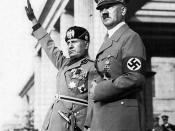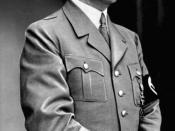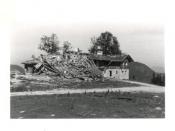Commander-in-Chief of the Luftwaffe, President of the Reichstag, Prime Minister of Prussia and, as Hitler's designated successor, the second man in the Third Reich, Hermann Goering was born in Rosenheim on January 12, 1893.
The son of a judge who had been sent by Bismarck to South-West Africa as the first Resident Minister Plenipotentiary, Goering entered the army in 1914 as an Infantry Lieutenant, before being transferred to the air force as a combat pilot. The last Commander in 1918 of the Richthofen Fighter Squadron, Goering distinguished himself as an air ace, credited with shooting down twenty-two Allied aircraft. Awarded the Pour le Merite and the Iron Cross (First Class), he ended the war with the romantic aura of a much decorated pilot and war hero. After World War I he was employed as a showflier and pilot in Denmark and Sweden, where he met his first wife, Baroness Karin von Fock-Kantzow, whom he married in Munich in February 1922.
Goering's aristocratic background and his prestige as a war hero made him a prize recruit to the infant Nazi Party and Hitler appointed him to command the SA Brownshirts in December 1922. Nazism offered the swashbuckling Goering the promise of action, adventure, comradeship and an outlet for his unreflective, elemental hunger for power.
In 1923 he took part in the Munich Beer-Hall putsch, in which he was seriously wounded and forced to flee from Germany for four years until a general amnesty was declared. He escaped to Austria, Italy and then Sweden, was admitted to a mental hospital and, in September 1925, to an asylum for dangerous inmates, becoming a morphine addict in the course of his extended recovery.
Returning to Germany in 1927, he rejoined the NSDAP and was elected as one of its first deputies to the...



Plagiarized
This essay was plagiarized from http://www.adolfhitler.ws/lib/nsdap/goering.html
2 out of 3 people found this comment useful.